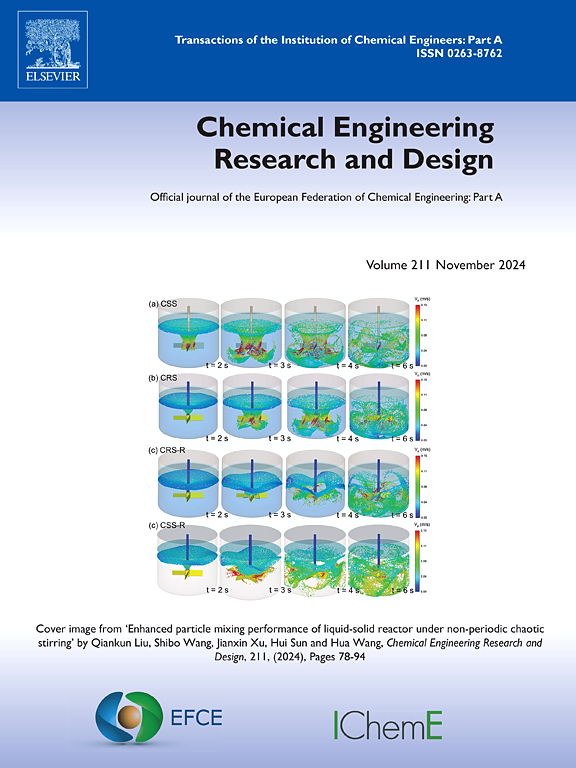薄纸气流干燥成型过程的研究:固体含量的数值与实验对比研究
IF 3.9
3区 工程技术
Q2 ENGINEERING, CHEMICAL
引用次数: 0
摘要
通过空气干燥(TAD)技术通过使用真空或成型盒在结构化织物上形成湿纸网,然后在TAD气缸上进行热空气置换干燥,从而提高高质量的组织级纸生产。为了更好地了解成型过程中的干燥速率,本研究使用COMSOL Multiphysics软件进行CFD建模。纸张的二维模型估计固体含量随真空时间的变化。使用COMSOL与MATLAB的界面生成组织样本,实现随机纤维分布。通过耦合Navier-Stokes方程和平流-扩散方程模拟流体流动和水分输运,考虑湿空气和液态水之间的平衡,带惯性修正的Darcy定律描述了纤维内流体的运移。模拟研究了精炼水平和纤维成分对基重从15到30 g/m²的影响。材料性能(包括孔隙度和渗透率)通过实验室测试进行校准,并在中试实验中进行验证。结果表明,针叶纸浆精炼程度的增加对孔隙度和初始干燥度有显著影响,预测组织干燥度与实际组织干燥度基本一致。校准的模型可能是提高TAD过程能源效率的第一步,为更可持续的组织制造方法铺平了道路。本文章由计算机程序翻译,如有差异,请以英文原文为准。
Investigation of sheet molding during through air drying of tissue paper: A comparative numerical and experimental study of the solid content
Through Air Drying (TAD) technology enhances high-quality tissue-grade paper production by shaping a wet paper web on a structured fabric using vacuum or molding boxes, followed by hot air displacement drying over TAD cylinders. This study uses CFD modeling with COMSOL Multiphysics to understand drying rate during the molding process better. Two-dimensional models of paper sheets estimated solid content over vacuum time. Tissue samples were generated using COMSOL’s interface with MATLAB, enabling a random fiber distribution. Fluid flow and moisture transport were simulated by coupling the Navier-Stokes and advection-diffusion equations, while Darcy’s law with inertial correction described fluid migration within fibers, considering equilibrium between moist air and liquid water. Simulations examined the impact of refining levels and fiber compositions for basis weights from 15 to 30 g/m². Material properties, including porosity and permeability, were calibrated with laboratory tests and validated in pilot experiments. Results showed that increased refining of softwood pulp significantly affects porosity and initial dryness, achieving reasonable agreement between predicted and actual tissue dryness. The calibrated models could be a first step to improve energy efficiency in TAD processes, paving the way for more sustainable tissue-making methods.
求助全文
通过发布文献求助,成功后即可免费获取论文全文。
去求助
来源期刊

Chemical Engineering Research & Design
工程技术-工程:化工
CiteScore
6.10
自引率
7.70%
发文量
623
审稿时长
42 days
期刊介绍:
ChERD aims to be the principal international journal for publication of high quality, original papers in chemical engineering.
Papers showing how research results can be used in chemical engineering design, and accounts of experimental or theoretical research work bringing new perspectives to established principles, highlighting unsolved problems or indicating directions for future research, are particularly welcome. Contributions that deal with new developments in plant or processes and that can be given quantitative expression are encouraged. The journal is especially interested in papers that extend the boundaries of traditional chemical engineering.
 求助内容:
求助内容: 应助结果提醒方式:
应助结果提醒方式:


